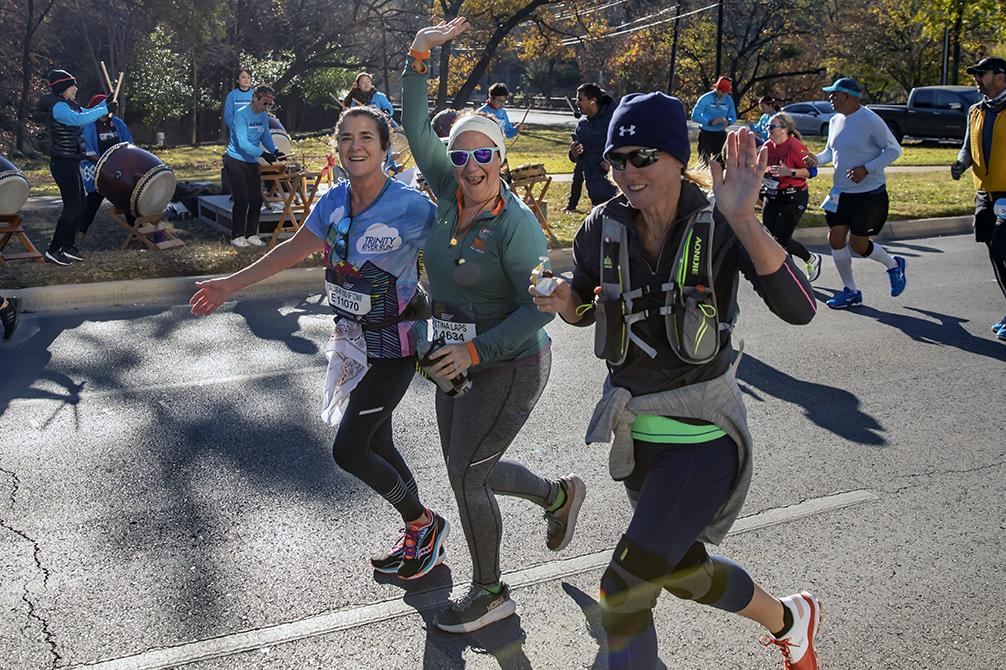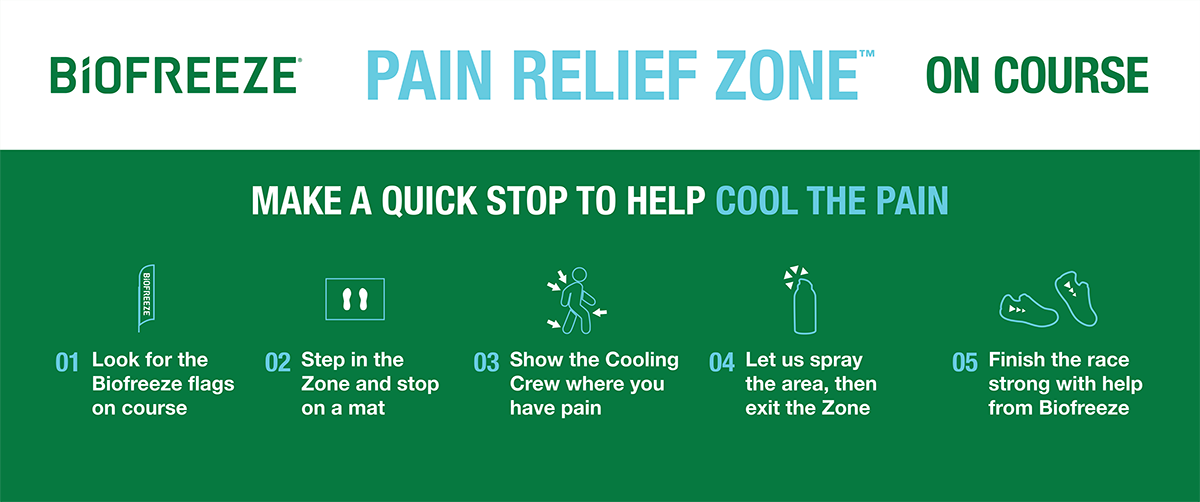
Training Tips
New to running or need a boost during training? Find helpful training tips, nutrition and other advice to get you moving in the right direction. We’re here to help so if you need further assistance, please reach out to us at info@dallasmarathon.com and we’ll help connect you to the right place. Happy running!

Getting Started
Training for the 2025 BMW Dallas Marathon?
Here are some fundamental building blocks of training for a marathon or half marathon:
Have A Good Base. Aim for running 4-6 days per week depending on your level of experience. For beginners you should be running 25-30 miles per week for marathons, 10-15 miles per week for a half marathon.
Run Long Once a Week. This prepares you physically and mentally for the distance. This should be done at conversational pace for most of us, especially beginners. Aim to increase by 1 mile per week, or 2 miles every other week, building in a “fall back” week every 2 or 3 weeks as recovery. Build your long runs gradually to peak with the longest run of 20-22 miles 2 or 3 weeks prior to race day.
Weekday Shorter/Faster Workouts. These workouts will help increase aerobic capacity and make those long runs feel easier! You can incorporate mile repeats, longer “tempo” runs that can range from 3-6 miles and hill repeats of running quickly up & downhill for 2, 3x 10-minute blocks with 5-minute recovery which will help strengthen and help form efficiency as well as gain mental toughness.
Recovery, Rest and Tapering. These are essential ingredients in any training program. If you are not reaching your long run and shorter/faster workout goals, you may be running too hard on recovery/easy days. Rest days (at least one per week) means NO RUNNING OR WORKOUTS. Tapering for race day starts 2-3 weeks out by decreasing weekly long run miles in half and keeping weekday miles short with some speed to keep the legs fresh and primed to race!
Good luck in your training and we’ll see you December 12th - 14th, 2025!

Finding the Right Shoe
Running shoes will be one of your most loyal companions you’ll have getting to your goal. Some runners hit it off just great and seem to have synergetic dependence with their shoes. And others, not so much. These runners flounder in and out of brands and model types and when they almost get close, the model changes and issues creep in.
Today’s running shoes can fit different running styles, speeds and how your biomechanics change when fatigued.
There are many ways to manage overuse injuries through footwear:
- Overlapping and alternating your working model
- Diversifying your stress with different brands or models within the same structural family
- Having a recovery cruiser or a speed race day shoe in the mix
Even if all has been well, the industry has many moving parts. Running shoes are ever-evolving. As we age and implement other fitness activities, both mobility and joint stability change.
Basic running shoe knowledge:
- Core Running Trainers last 350-400 miles
- Lightweight Trainers last 200-300 miles
- Rotating shoes can gain about 50 miles a pair
- A well fitted shoe will become an issue when the product needs to be replaced
- A re-evaluation is needed if problems show up after a two-week break in period
- Overlapping shoes can help with model transition and help you recognize when a shoe is at its end.
- Lacing techniques allow the shoe to behave differently
- Running shoes are sized to your arch length, not your foot length
- No human has the same size foot, the common margin of difference is a half size (1/8”)
- Most 6-month running programs would need 2-3 pairs of shoes to cover the training
Blisters are a product of friction. Here are some helpful tips:
- Eliminate cotton socks as it binds when wet; try a good wicking sock
- Try a different shape shoe
- Try variations of lacing
- Use anti-blister lubricants


Biofreeze
Many runners aren’t dedicating enough time to recovery or addressing aches and pains head on. That’s where Biofreeze comes in! Biofreeze is a topical pain reliever that applies easily and cools the pain to get you across the finish line. The cooling menthol in Biofreeze helps provide fast acting and powerful relief from muscle and joint aches and pains. It’s also the #1 clinician recommended* menthol topical pain relief brand! Don’t miss the Biofreeze Pain Relief Zone around Mile 21.2 where the Cooling Crew will be armed with Biofreeze spray to help cool the pain and get you across the finish line. Biofreeze comes in an array of different forms including Roll-On, Gel, Spray, Cream and Patches, to meet all your pain relief needs. Pick up Biofreeze at a store near you or order online today so you can experience powerful pain relief for yourself and get training for your next race. Use as directed.
Find a variety of Biofreeze options available HERE.
* Based on a survey of Clinicians: chiropractors, podiatrists, physical therapists, massage therapists, retail pharmacists, and athletic trainers, of OTC topical pain relief products (Ipsos Clinician Survey)